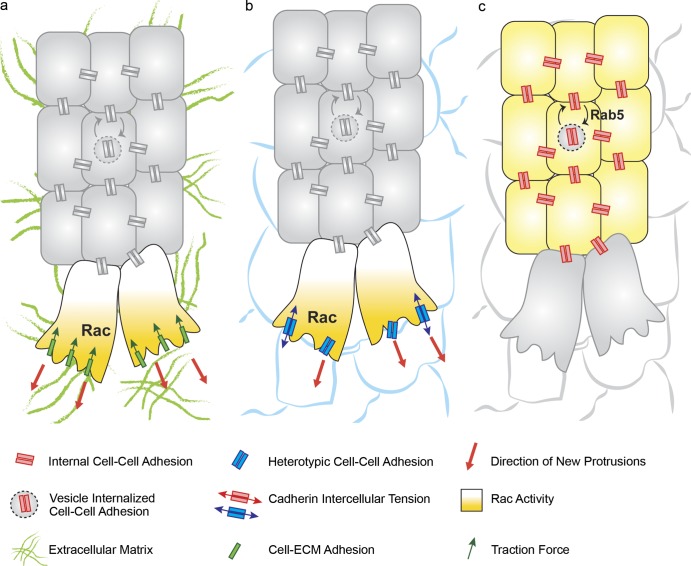Figure 3.
Cell–ECM and cell–cell interactions in collective migration. (a) Integrin-dependent adhesions between collectively migrating cells and underlying ECM allow leader cells to form protrusions and exert traction forces on the ECM. Cell–ECM interactions may promote directionality of migration by enhancing Rac-dependent protrusion formation. (b) Heterotypic adhesions between the leaders of the migrating cluster and surrounding cells occur in border cell and mesendoderm migration. Cell–cell adhesion is required for protrusion formation via activation of the small GTPase Rac. Such adhesions can be under tension. (c) Cell–cell adhesion between inner cells is required to maintain mechanical integrity of the collectively migrating group. Adhesion needs to be relatively dynamic to allow rearrangements between cells; this is achieved in a variety of systems via Rab5-dependent internalization of cell–cell adhesions. NC, neural crest.

